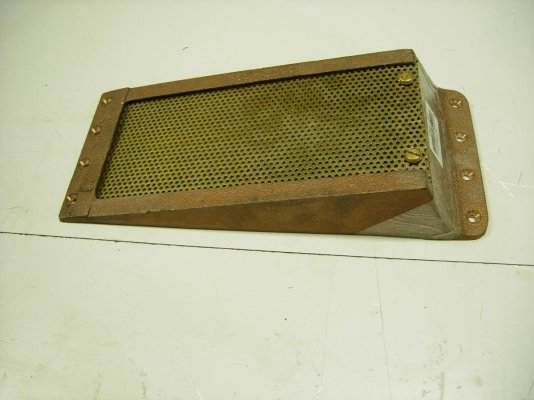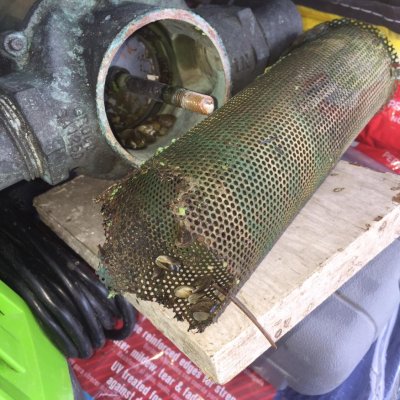Simple answer is that the external screen prevents most of the junk, but whatever goes through goes until it hangs up somewhere else. The internal strainer basket often holds some solids that fell out do to gravity. Have both on my charter boat, and often find some hard bits in the bottom of the strainer at the end of the season. While they likely go right on through, I'm happy that there not getting between the pump impeller and the housing. While the internal one isn't absolutely necessary, I certainly wouldn't remove it if you were adding the pin hole style external one. Now have both on my trawler.
Ted
Ted - Per bold sentences in your above, again quoted below... how/what falls out do to gravity, and from what... engine rust??
"The internal strainer basket often holds some solids that fell out do to gravity."
"... often find some hard bits in the bottom of the strainer at the end of the season"


 Nothing that touches raw water is steel or iron. Strainer is before the engine anyway. They are particles from the ocean that found they're way through the external strainer. I go out through a stone jetty inlet with a current that can be 3 knots. All sorts of stuff can get stirred up with that kind of flow. Could be bits of stone, sand, shell, or who knows what. Just happy it's getting filtered out.
Nothing that touches raw water is steel or iron. Strainer is before the engine anyway. They are particles from the ocean that found they're way through the external strainer. I go out through a stone jetty inlet with a current that can be 3 knots. All sorts of stuff can get stirred up with that kind of flow. Could be bits of stone, sand, shell, or who knows what. Just happy it's getting filtered out.

